Botanic Garden
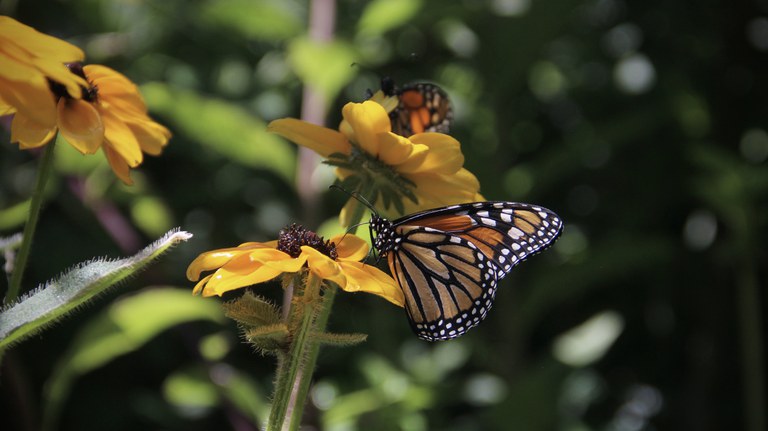
Opened in 1996, the Botanic Garden has grown to 32 acres of exhibits, and showcases plants from the American Southwest and around the world.
The Botanic Garden’s BUGarium is one of the most elaborate exhibits dedicated to bugs and arthropods in the country.
The Travel Channel cites ABQ BioPark Botanic Garden as one of the top 12 in the country!
Seasonal Update:
Learn more about featured seasonal plants.
Featured on 4/17/24: Pictured here is the cultivar Viola 'Mulberry Shades', found in the containers in the Curandera Garden for Spring. Did you know that all pansies are violas, but not all violas are pansies? Though many use the names interchangeably, you can tell the difference by looking at the petal arrangement: a pansy has four petals pointing upward and only one pointing downward; whereas a viola flower has two petals pointing upward and three petals pointing downward. The genus Viola is the largest of the family Violaceae with over 680 species, most of which are found in the temperate Northern Hemisphere but there are some found in Hawaii, Australasia, and the Andes.
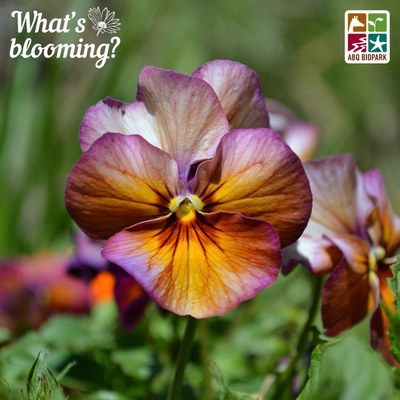
Featured on 4/2/24: This is the Double Flowering Almond, scientific name Prunus triloba ‘Multiplex’. It is a large flowering shrub that can be trained into a small ornamental tree, with a maximum height of 15’ when mature. This is a great example of why scientific names are important: Prunus triloba ‘Multiplex’ is not to be mistaken for edible almond trees, Prunus amygdalus, or for the smaller flowering shrub of the same common name, Prunus glandulosa. Prunus glandulosa has similar double pink flowers as Prunus trilobal, but only reaches 5’ in height. That can make it a better choice for the same look in smaller spaces. All three species of almond are members of the rose family which includes: strawberry, apple, plum, peach, cherry, and hawthorne; to name just a few. Flowering almond are one of the earliest spring-blooming shrubs and trees (along with cherry, redbud, and crabapple) at the Botanic Garden and mark the beginning of warm, petal-filled breezy days. It's one of the best times of year to plan a visit!
Flowering almond should be pruned just after they finish flowering in the spring. Avoid late-season or winter pruning to prevent pruning off next year’s developing flower buds. Although fairly resilient in our hot, dry summer climate, flowering almond trees will do best with consistent even moisture in well-draining soil. Flowering almond can tolerate light shade and should be protected from intense afternoon sun or reflective heat. If planted near buildings or hardscape, choose an eastern or northern exposure, and underplant with groundcover to break up the reflected heat and keep the roots cool. All fruiting and flowering members of the genus Prunus will benefit from the addition of organic compost during the growing season.
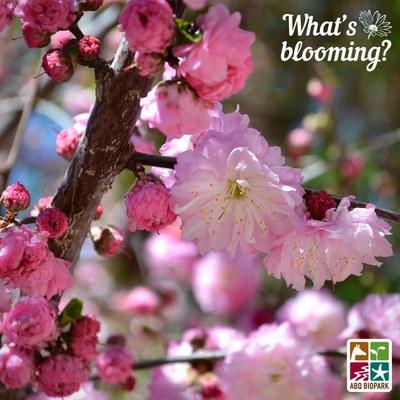
Featured on 2/28/24: Winter Jasmine, or Jasminum nudiflorum which means "naked flower". Its scientific name refers to the fact that these bright yellow funnel-shaped flowers appear on bare branches before the leaves, sometime during January or February. Some plants may even produce two-lobed black berries. This species of jasmine is native to Southeastern Tibet and Southcentral China, but it lacks the sweet smell that most people associate with jasmine. In China, its leaves and flowers are used in traditional medicine and it is called "Yingchun", which means "flower that welcomes spring". Winter jasmine is sometimes confused with Forsythia, which blooms later in spring, but Forsythia flowers only have 4 petals.
Winter Jasmine is deciduous, and it can be grown as either a climbing vine or ground cover. Although it does not require pruning, it tolerates it very well. It prefers growing in an area of bright sunlight to partial shade, and well-drained sandy soil with occasional fertilizer. Clay soils are not recommended. It will tolerate full shade at the cost of reduced flowering, and it is drought tolerant once it is established. Winter Jasmine is generally cold tolerant to 5° Fahrenheit, so it can be left outside during our Albuquerque winters!
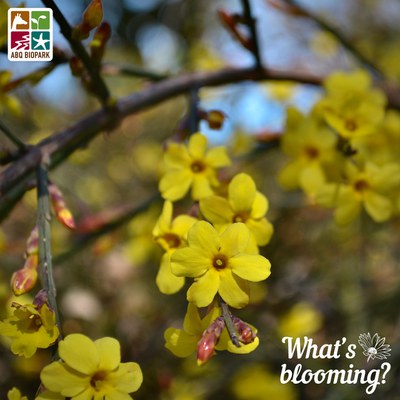
Featured on 1/24/24: 'Mystic Maze' is an intergeneric orchid species hybrid, which means breeding two or more genera together. This is usually done with orchids belonging to the Odontolglossum tribe and includes the genus of Brassia, Cochlioda, Miltonia, Odontoglossum, and Oncidium. 'Mystic Maze' average between 20-28 inches tall, with star-shaped flowers that can be about 5 inches across.
Some species of orchid have evolved to mimic wasps or other insects, who will come either to mate or defend their territory and are tricked into helping with pollination! With their mild fragrance, they can attract other pollinators as well.
They can grow in filtered sunlight or partial shade, but like to be kept humid in a well-draining substrate like decomposing bark with pumice, volcanic rock or another porous material mixed in. Because they are epiphytic, they need excellent airflow. Keep them happy and they will bloom in January/February and again in March/April.
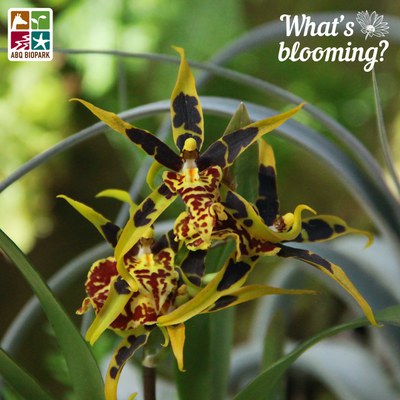
No results were found.
